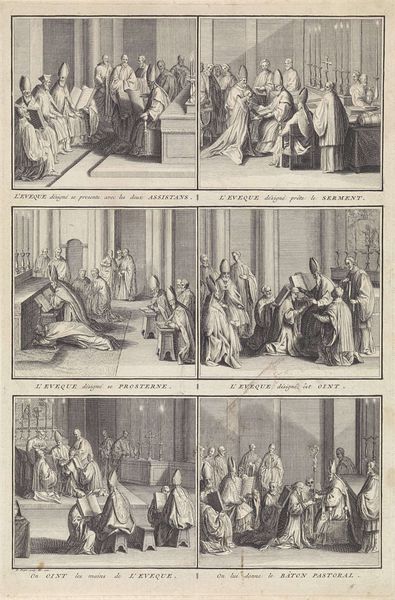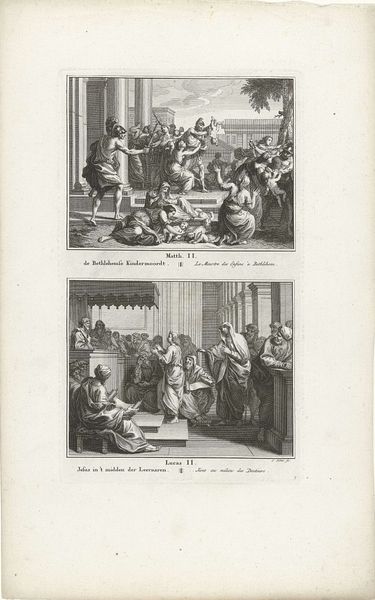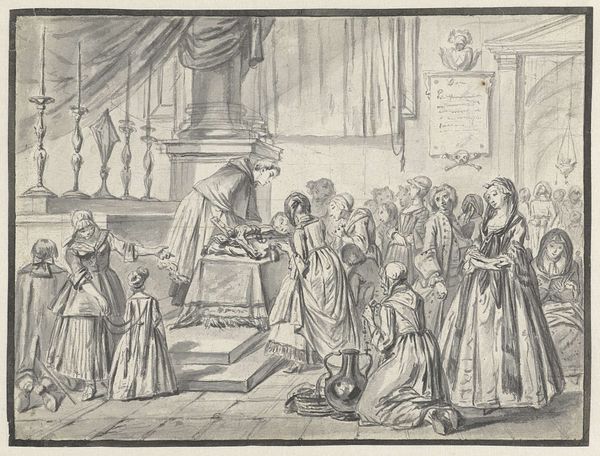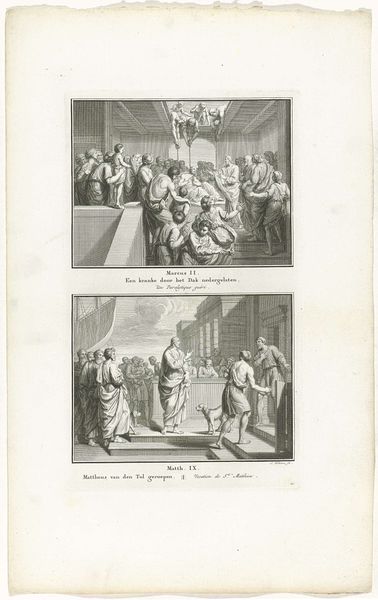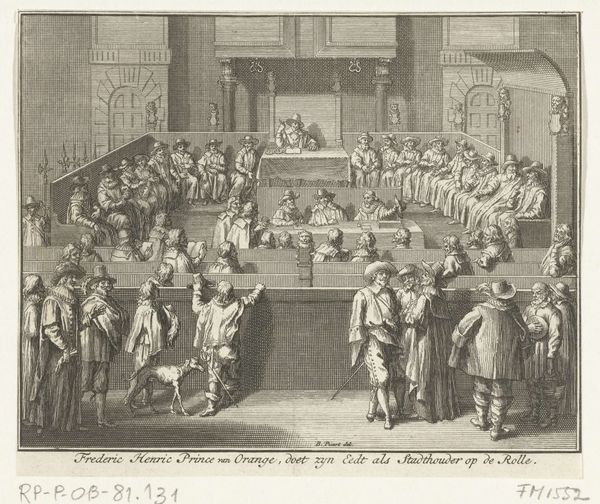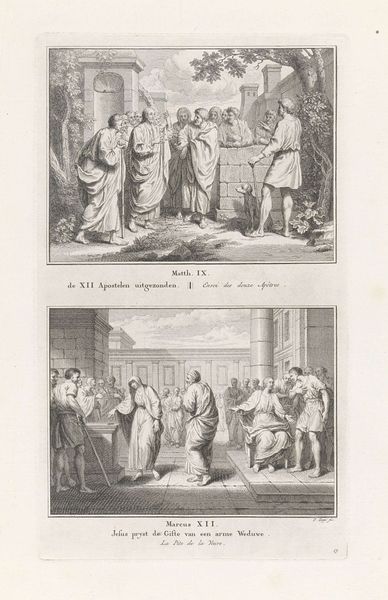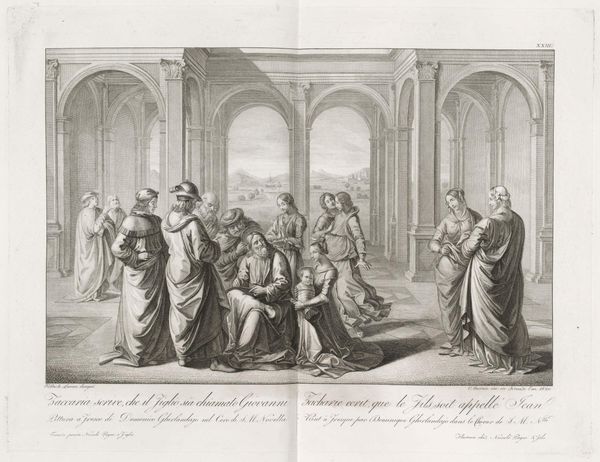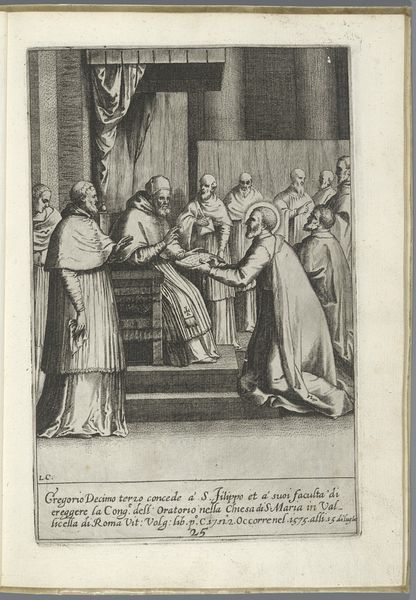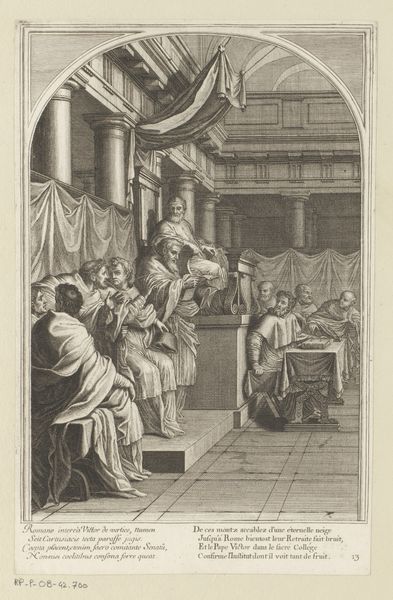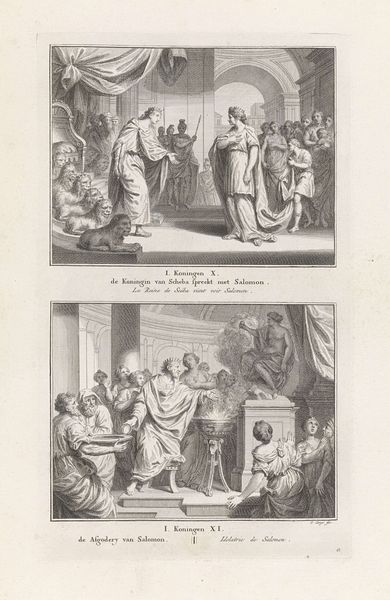
Heilig Vormsel / Andere manier voor de ceremonie van het Heilig Vormsel 1723
0:00
0:00
print, engraving
#
baroque
# print
#
old engraving style
#
history-painting
#
engraving
Dimensions: height 334 mm, width 217 mm
Copyright: Rijks Museum: Open Domain
Curator: Before us we have a baroque print dating back to 1723, created by Bernard Picart. The piece, titled "Heilig Vormsel / Andere manier voor de ceremonie van het Heilig Vormsel", is currently held at the Rijksmuseum. Editor: It strikes me immediately as a depiction of power, carefully staged within a deeply hierarchical society. The scene feels static, ritualized. Curator: Indeed. As the title suggests, the engraving showcases two different ceremonies of Confirmation. The composition, divided into two distinct registers, serves to compare and contrast. In the upper scene, we see a confirmation taking place with what seems a nobler crowd compared to the one displayed in the second register. Editor: And notice the deliberate visual cues reinforcing class distinctions. The garments, the posture of the participants—everything speaks to who is deemed worthy and who is not. We need to see this not just as a religious ritual, but also a social one that is exclusionary. Curator: I see the presence of cultural continuity at play, how this historical interpretation reflects and echoes prior images. Take the deliberate placement of figures and how each relates to the other. I observe established symbolic formulas intended to carry specific theological messages to viewers familiar with such cultural icons. Editor: Absolutely. I'd push further and point out the social function in reinforcing particular worldviews. This print likely circulated within a specific social sphere to solidify existing power dynamics. We need to analyze not only what is depicted but how it would be received by various audiences at that time, taking into consideration gender, status, and the role of political structures. Curator: Such social and political undertones are impossible to ignore when exploring a scene that shows us a glimpse into religious doctrine through iconography and symbolism, especially in the context of that era. Editor: The analysis is a call for questioning established notions, it requires an analysis on multiple fronts. It requires considering both the artistic context and its real world social ramifications. Curator: Reflecting on this piece, I realize the past and the present remain in constant communication through imagery, reminding us how cultural echoes remain imprinted and influence perception. Editor: For me, analyzing "Heilig Vormsel" reinforces art as a potent tool for perpetuating and questioning power.
Comments
No comments
Be the first to comment and join the conversation on the ultimate creative platform.

